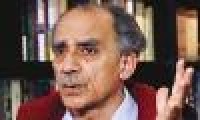Journalism before TV and Twitter

Thirty years back, journalists were mostly stenographers, collecting press releases and rehashing them.
So declared Rajdeep Sardesai, with the air of finality that television news anchors adopt whenever they make any statement, no matter how outrageous or inaccurate it is. He was part of a panel discussion on ‘can activist media be responsible’ during the Confederation of Indian Industry’s national conference and annual session.
Journalists now, he elaborated, are more questioning and assertive and gave credit for this to television news.
We’ll ignore the minor matter of this assertion being made by someone who had moments earlier admitted to re-tweeting false news of an actress’ death without checking (what a very stenographer thing to do, really).
Yes, thirty years back, those wanting to become journalists had to sign up for typing and shorthand classes (advertisements for jobs in PTI, UNI insisted on shorthand skills). Journalist-trainees in the Times of India had to walk down to a typing institute in the Fort area (in Mumbai) twice or thrice a week to learn typing and pass a typing test to get confirmation letters. So what did these stenographers do?
Thirty years back, long before sting operations with hidden cameras, a ‘stenographer’ called Ashwini Sarin got himself arrested and spent time in Tihar Jail to write about conditions in the jail. He later masqueraded as someone who wanted to buy a girl and worked for months to uncover a racket in trade of women in the interiors of Madhya Pradesh.
Thirty years back, a team of ‘stenographers’ helped Arun Shourie unearth details of how Maharashtra chief minister A. R. Antulay was forcing builders to donate to an Indira Gandhi Pratibha Pratishtan in exchange for cement permits.
Thirty years back, ‘stenographers’ like Sheela Barse highlighted the conditions in Indian jails and were responsible for a modicum of prison reforms.
Okay, so these are celebrated cases. Were the rest all rehashing press handouts?
Thirty years back, ‘stenographers’ called Usha Rai, Kalpana Sharma, Darryl D’Monte were going beyond what government officials told them, going out into the field and doing hard-hitting stories that highlighted environmental and developmental issues, which were not on the radar of public discourse at all.
Were all journalists 30 years back investigative journalists? Were there no stenographers at all? Obviously, the answer to both questions is no. Yes, there were lazy journalists in those days who would do rehash press releases and handouts. But there were many others – not as celebrated as those mentioned earlier – who were not. Who were digging out uncomfortable facts, going out into the field and getting reports from the grass roots, about riots and massacres, official apathy, public health issues.
But are there no lazy journalists now? Is there no blind and unquestioning swallowing of facts/information that is put out by the government or corporate sector or even NGOs pursuing an agenda? The phenomenon of phone and fax (and now email) journalism has become a huge problem for print journalism. A few years back a fake press release about a Nazi war criminal being arrested in Goa was rehashed and published by several leading newspapers.
But since Sardesai has claimed that news television has energised the media, let’s put this question to him - is this phenomenon of lazy journalism confined only to the print media?
Can Sardesai honestly say that news television carries only news that has been checked and double-checked? Will he disown the instance of a television channel running news about people being killed in a train derailment, without checking with the railway PRO? It turned out later that passengers had suffered only minor injuries.
Two years back, in the course of a television panel discussion on Dalit atrocities, the head of National Commission of Scheduled Castes stated that crimes per lakh population of scheduled castes were the highest in Haryana. Then came activist Kancha Ilaiah who asked why only Dalits get raped by upper castes. The anchor let both statements pass unchallenged, with no attempt to ask for figures or facts to substantiate such charges.
It doesn’t matter that neither of these incidents relate to Sardesai’s channel; he was speaking for news television and he has to answer for all its failings.
When election reportage of news television remains focussed on a few prominent names and a few others with star power, is that not lazy journalism? Sardesai will no doubt say (as he did at the discussion) that the pressure of competition and the tyranny of TRPs has led to fact-checking being sacrificed. That may be an explanation; can it become an excuse?
If journalists of a certain generation were stenographers, what label should be used to describe television journalists who become willing tools of politicians conducting dubious stings on their rivals? What label should be used to describe editors of a business news channel who come to an understanding with finance ministers to run a particular interview that will affect the stock markets at a certain time? What label should be used to describe television channel editors and reporters who tell camera persons to take only tight shots of rallies of one leader when attendance is sparse and to take live feed from a political party of rallies of another leader?
It was a pity that two other panellists at the discussion – Aroon Purie proprietor of the India Today group and Shekhar Gupta of the Indian Express, both of whom could have given Sardesai some lessons in journalism history – chose to let his comment pass.
Thirty years back, that would not have happened.
(The author’s views are obviously coloured because she has been a journalist for, well, 30 years.)